
World of Commodore 2005

 |
World of Commodore 2005 |
 |
On 2005-12-03, the Toronto Pet Users Group (TPUG) celebrated its 26th anniversary by holding an expo. We were in the basement of a church and had an auditorium for the vendors and a meeting room for the demos. The kitchen was also commandeered :) Click any picture for a larger image.
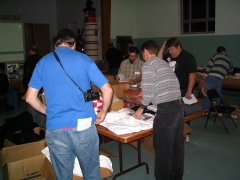
An Amiga vendor, with the obligatory boing ball. Joe Palumbo's table is visible in the back of the picture; I got the Oxford Pascal compiler from him! |

The TPUG table. Got the Datatronic Forth cartridge there; ultra-obscure! |
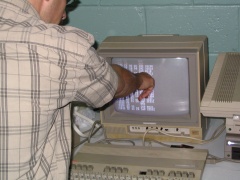
What would a Commodore expo be without a little on-the-fly demo coding? |
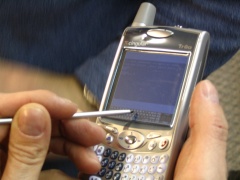
Somebody's Treo has learned a new trick... |
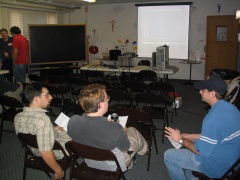
This is the room where the demos were held. Burt Bochenek's AmigaOne is on the table to the right. |
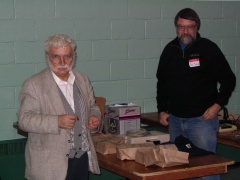
The inimitable Jim Butterfield, with a little help from TPUG member Ian McIntosh, conducts the bag raffle (I won a Commodore LCD watch!). Jim later gave a hilarious talk entitled "How Not to Code". |

Peter Schepers demonstrates some of the latest features in his program 64Copy, including a sophisticated disassembler that can see inside archive files. Peter tried to convince us that he isn't really a programmer, but no one would believe him. |
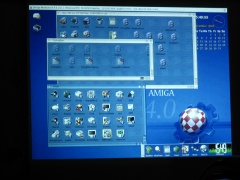
Burt Bochenek gave a very thorough talk on the state of Amiga OS4 and the hardware that can run it. His machine would boot Amiga OS or Debian Linux, from where he could start versions 9 or 10 of the Mac OS. And Amiga OS4 will run binaries from earlier versions! Yow. |
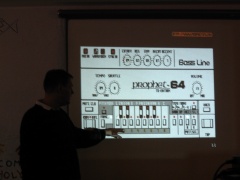
Just when you thought you'd heard everything the SID chip can do, along comes Prophet64, a program that emulates the old Roland synthesizers that have come back into fashion. Rob Adlers demoed this amazing piece of software. |
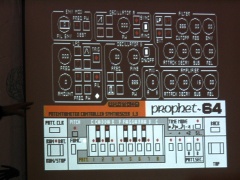
Another of the Prophet64 binaries in action. Rob also had recordings of output from this program made with both the old (6581) and new (8580) versions of the SID chip. The differences (especially in the filters) were obvious. |

Leif Bloomquist gave two demos, starting with the CD player he wrote for the IDE64. If you don't know yet, this is a cartridge with an IDE interface. |
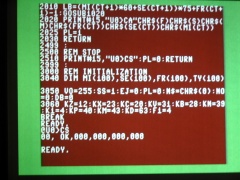
And this is how easy is it to use. Yes, folks, 95% of the program is written in BASIC (the UI is done with a charset, but there's an ML screen clear routine). |

Leif's second demo was of the RR-Net, an Ethernet adapter built onto the RetroReplay board. This is the Contiki operating system in action, running in 64 kilobytes of RAM. |
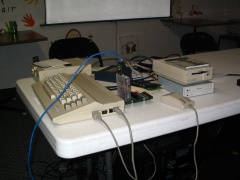
This is a close-up of Leif's rig for the demos. The RR-Net sticks up out of the top of the RetroReplay; the IDE64 is on the table behind. The 1581 is really a hard drive in a 1581 case. Beneath it is an IDE CD drive. |